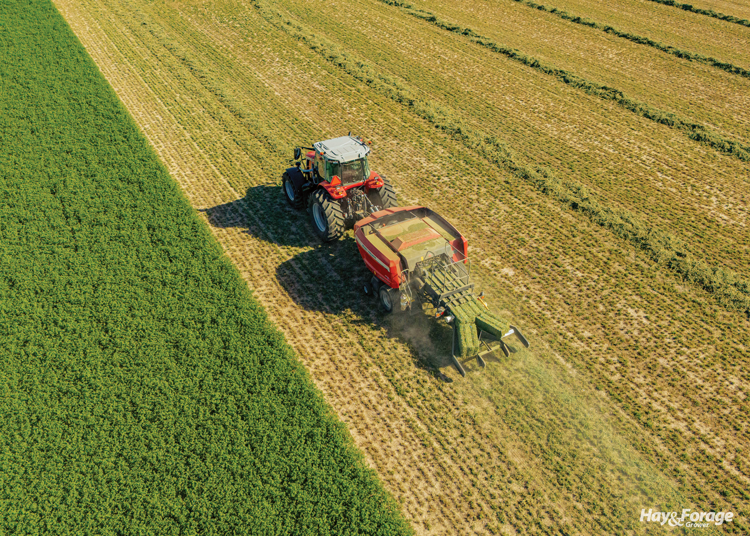Doubling your baling pleasure |
| By Adam Verner |
|
|
|
The author is a managing partner in Elite Ag LLC, Leesburg, Ga. He also is active in the family farm in Rutledge.  Double balers will offer an opportunity to improve efficiency on the commercial hay farm. As we get ready for the upcoming hay season, numerous engineers have been hard at work to give us the first true new development in the small-square business in a long time. I normally don’t get too involved with the different manufactures, but in this case, there are only two to discuss. The newest innovation I’m referring to are balers that can make two, two-tie bales at once — the Grady Twin Pak SB 2XR and the Hesston by Massey Ferguson SB.1436DB. The Grady baler has now been acquired by John Deere to be distributed through their network of dealers. This agreement started back in 2023 and is available through select dealers in both two-tie and three-tie configurations. The original versions, developed by Mike and Jason Grady, were available in New Mexico and Arizona in 2018 and 2019, but with this acquisition by John Deere, the production of these is sure to skyrocket. The new player to this market is Massey Ferguson with their new release of the SB.1436 DB at the World Ag Expo in Tulare, Calif., and the National Farm Machinery Show in Louisville, Ky., last month. These new balers will be out and running in 2025 in small numbers, but full production is planned for 2026. Let’s compare what we know about the two units. Both are similar in their overall design, and both are inline balers with 90 plunger strokes per minute. Each have a wide pickup with the hydraulic lift being the only main hydraulic requirement from the tractor. Both balers have self-contained hydraulic systems for bale density and real bale chute functions. Each of the two balers uses star wheels to set the bale length and trigger the yoke and needles to tie the bales. This is where most of the similarities end. Expect improvements The Twin Pak was originally very simple with few electronics, which I think can be a good thing, but as all manufacturers do these days, Deere is incorporating ISOBUS and bale data into the machine. Down the road, I think you can expect bale tagging and weight data being stored on Deere’s operations center. This is something they are already doing with their large-square balers and could be helpful to customers who sell their small-square bales by the ton. The Twin Pak has a scale mounted in the rear on the right-hand side. The Twin Pak has a big appetite and can operate at speeds of over 6 miles per hour (mph), but speed is also required to keep the prechamber full in lighter windrows and to maintain a uniform flake size and length. The four or six knotters all work together on the same yoke and tie together just like a large-square baler using Rasspe knotters. This is one of the key differences I noticed between the two balers. Same, but different Massey Ferguson’s SB.1436DB uses the same knotters as the Twin Pak, but each side of the two-tie bale work independently of each other. Each side of the baler has its own star wheel and independent yoke and needles. According to company representatives, this will lead to more consistent bale lengths in all windrow conditions, which I think is true. The length of bale, its density, and flake size can be set on the monitor of the 1436 DB. When used in conjunction with the integrated scales, the 1436 DB has an auto-bale feature that allows the baler to adjust to varying conditions throughout the day. You can set your desired bale length and weight, and the baler’s on board computer will adjust the density setting compared to the bale weight it’s producing. The 1436DB is available with scales that weigh both bales and also an integrated inoculant system that can be controlled from the baler monitor. Both balers are recommended to run with a 150 PTO horsepower tractor for the two-tie balers, though the three-tie Twin Pak does require a little more. I, for one, am excited about these two new innovations in the small-square business. The small-square baler market has basically gone unchanged for over 70 years. The biggest question is what are these balers going to cost? I hope everyone has a great spring and good start to the 2025 haying season. This article appeared in the March 2025 issue of Hay & Forage Grower on page 17. Not a subscriber?Click to get the print magazine. |
